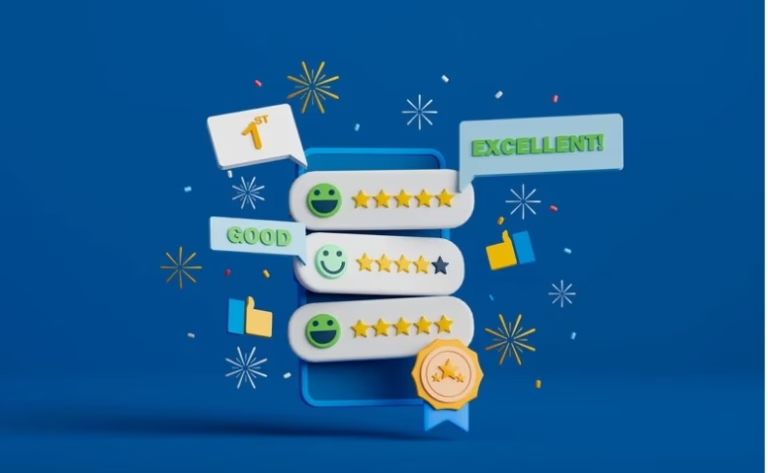Welcome to the intriguing world of Raterpoint, where every click and rating counts. In today’s fast-paced digital landscape, understanding how your online presence is evaluated can make all the difference. Whether you’re a business owner looking to enhance your reputation or a curious individual wanting to decode the underlying mechanics of this rating system, you’ve come to the right place.
Raterpoint isn’t just another buzzword; it plays a pivotal role in shaping perceptions and driving decisions across platforms. From e-commerce sites to social media networks, ratings influence user behavior more than ever before. So, what exactly is Raterpoint? Why should you care about it? Let’s explore its significance together as we unlock its secrets and delve deep into this fascinating topic.
Understanding Raterpoint: What is it and why is it important?
Raterpoint is a digital rating system that evaluates user-generated feedback across various platforms. It serves as a metric for trustworthiness, helping consumers gauge the reliability of products and services.
Understanding Raterpoint means recognizing its influence on purchasing decisions. High ratings can lead to increased visibility and credibility for businesses, while low scores might deter potential customers.
This system goes beyond mere numbers; it reflects real experiences. Every review contributes to an online reputation shaped by collective opinions, making transparency essential in today’s marketplace.
For users, mastering Raterpoint fosters informed choices. By navigating reviews cleverly, individuals can find quality offerings tailored to their needs. In essence, being aware of Raterpoint not only enhances your decision-making but can also empower you as an informed participant in the digital economy.
The History of Raterpoint and its Evolution
Raterpoint has an intriguing history that traces back to the early days of online reviews. It emerged as a response to the growing need for credibility in digital spaces.
Initially, Raterpoint focused on gathering user feedback from various platforms, allowing consumers to make informed decisions based on collective experiences. Its innovative approach quickly gained traction among users seeking reliable insights.
As technology advanced, so did Raterpoint’s features. The introduction of algorithms helped refine ratings by filtering out fake reviews and enhancing accuracy. This evolution positioned it as a critical player in shaping online reputations.
In recent years, Raterpoint expanded its reach beyond traditional industries like retail and dining into sectors such as healthcare and services. This shift underscored the versatile nature of user-generated content in influencing consumer behavior across diverse markets.
The Role of Raters in the Online World
Raters play a crucial role in shaping the online landscape. They provide essential feedback that helps businesses understand their audience better. Their insights can guide product improvements, service enhancements, and overall customer satisfaction.
In many ways, raters act as the bridge between consumers and companies. They give voice to user experiences, turning personal opinions into a collective narrative that influences purchasing decisions.
Moreover, raters help maintain quality standards across platforms. By evaluating content and services, they ensure that what’s available is reliable and trustworthy. This creates a healthier digital ecosystem for everyone involved.
As social proof becomes increasingly important in buying behavior, raters’ contributions are more vital than ever. Their assessments not only impact individual brands but also shape industry trends over time.
The Science Behind Raterpoint: How does it work?
Raterpoint operates on a sophisticated algorithm designed to quantify user feedback. At its core, it analyzes various metrics that reflect the quality and relevance of online content.
When users interact with websites, they provide implicit and explicit signals through their engagement patterns. Raterpoint captures these interactions, such as click-through rates and time spent on pages.
The algorithm then processes this data using machine learning techniques. It identifies trends and patterns that indicate how well content meets user expectations.
Additionally, Raterpoint takes into account factors like reviewer credibility and historical performance. This multi-faceted approach ensures accurate scoring that reflects genuine user sentiment rather than superficial ratings.
Transparency is also key in Raterpoint’s methodology. Users can often see how scores are calculated, fostering trust within the community while encouraging more authentic reviews across platforms.
Common Misconceptions about Raterpoint
Many people believe that Raterpoint is merely a popularity contest. This idea oversimplifies its purpose and function. It’s not just about how many users like or dislike something; it’s about the quality of those ratings.
Another misconception is that anyone can easily manipulate their Raterpoint score. While some may attempt to game the system, algorithms are designed to detect unusual patterns, making it difficult for dishonest practices to succeed.
Some think Raterpoint only applies to products or services. In reality, it encompasses various sectors including content creation, user experience design, and even social media interactions.
There’s an assumption that once your Raterpoint score is set, it’s permanent. Scores fluctuate based on user engagement and ongoing feedback—making it essential for creators and businesses to stay active in maintaining their reputation online.
Tips for Maximizing Your Raterpoint Score
To boost your Raterpoint score, start by engaging with the community. Participate in discussions and provide thoughtful feedback on others’ ratings. This not only enhances your visibility but also establishes you as a knowledgeable contributor.
Next, focus on consistency. Regularly evaluate and update your assessments to reflect any changes or new information. This shows that you’re attentive and reliable.
Don’t underestimate the power of quality over quantity. Take the time to craft detailed reviews rather than rushing through them for numbers’ sake. Clear, informative insights carry more weight in evaluations.
Networking is also essential. Connect with other raters who have high scores; learn from their strategies while sharing your own experiences.
Keep abreast of any updates or changes within the Raterpoint system itself. Adapting to new guidelines ensures that you remain competitive in this dynamic environment.
Potential Future Developments for Raterpoint
As technology evolves, Raterpoint is poised for significant advancements. One major direction could be the integration of AI and machine learning to enhance rating accuracy. This would enable a more nuanced understanding of user behavior.
Additionally, real-time analytics may become standard. Users might receive instant feedback on their ratings, allowing for quicker adjustments and improvements in content quality.
The platform could also expand its outreach by partnering with social media networks. This synergy would facilitate broader data collection and provide deeper insights into trends across various platforms.
Furthermore, enhanced gamification features can engage users more effectively. By incorporating rewards or recognition systems, Raterpoint may motivate higher participation rates from raters.
These developments promise an exciting future for Raterpoint as it seeks to remain relevant in a rapidly changing digital landscape.
Conclusion: Why Knowing About Raterpoint Matters
Understanding Raterpoint is essential for anyone navigating the online landscape today. This innovative system not only influences how content is perceived but also shapes user experiences across various platforms. As digital interactions become more prevalent, grasping the nuances of Raterpoint can give individuals and businesses a significant edge.
The evolution of Raterpoint showcases its growing impact in an increasingly competitive environment. Knowing its history helps users appreciate the intricate mechanisms that drive online ratings and reviews. Likewise, familiarizing oneself with the role of raters equips you to understand their influence on brand reputations and consumer choices.
Moreover, demystifying how Raterpoint operates allows users to leverage this knowledge effectively. By debunking common misconceptions, it becomes clear that improving your score isn’t just about accumulating positive feedback; it’s about cultivating genuine engagement and trust with your audience.
For those looking to maximize their scores, practical tips grounded in real-life applications can make all the difference. Staying informed about potential developments in Raterpoint ensures you’re prepared for changes that could affect your strategies moving forward.
Keeping abreast of these insights isn’t just beneficial—it’s crucial in today’s digital age where every rating counts. Understanding Raterpoint empowers you to navigate challenges effectively while making informed decisions that enhance your online presence.

